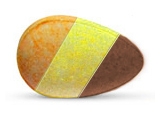Erectile tissue location and function
Are you curious about the mechanics of the male sex organ? Understanding the location and function of erectile tissue is essential for maintaining sexual health and performance. Erectile tissue refers to the spongy tissue that fills with blood during sexual arousal, causing an erection. This tissue is located in the penis and can be divided into two main types: the corpus cavernosum and the corpus spongiosum.
The corpus cavernosum is the main erectile tissue responsible for producing an erection. It is located on the top of the penis and has two separate chambers. During sexual arousal, blood flows into these chambers, causing them to expand and stiffen the penis. The corpus spongiosum is a smaller erectile tissue located beneath the corpus cavernosum. It encases the urethra and helps to maintain the rigidity of the penis during ejaculation.
Understanding the location and function of erectile tissue is important for diagnosing and treating sexual dysfunction. Erectile dysfunction, or the inability to achieve or maintain an erection, can be caused by a variety of factors, including hormonal imbalances, psychological factors, or physical damage to the penis. By understanding the underlying causes of erectile dysfunction, medical professionals can prescribe effective treatments, such as medications or surgery, to help restore sexual function.
"By understanding the mechanics of erectile tissue, men can be empowered to take control of their sexual health and improve their performance in the bedroom."
Learning about erectile tissue can also help men improve their sexual performance. By understanding the triggers that cause the tissue to expand and harden, men can take steps to improve their sexual health, such as through healthy lifestyle choices or targeted exercises. With this knowledge, men can be empowered to take control of their sexual health and improve their performance in the bedroom.
So why wait? Start learning about the location and function of erectile tissue today and take control of your sexual health.
The Importance of Understanding Erectile Tissue
What is Erectile Tissue?
Erectile tissue refers to the group of tissues in the penis or clitoris that become engorged with blood during sexual arousal, leading to an erection. This tissue plays a crucial role in sexual function and pleasure.
Why Understanding Erectile Tissue is Important?
Understanding erectile tissue can help individuals and couples have a better sex life. Knowing how the tissue works can help in treating sexual dysfunction and improving sexual stimulation.
It is also important to understand the role of erectile tissue in maintaining a healthy overall sexual function. Any issues with erectile tissue could be a sign of underlying health issues that require medical attention.
How to Take Care of Erectile Tissue?
Just like any other bodily function, it is important to take care of the erectile tissue. This can be done through regular exercise, maintaining a healthy diet, reducing stress, and avoiding smoking and alcohol. Communication with a healthcare provider can also help in maintaining healthy erectile tissue.
Conclusion
Understanding erectile tissue is essential in maintaining healthy sexual function and enjoying a satisfying sex life. Taking care of this tissue through a healthy lifestyle and regular check-ups can help in avoiding potential health issues and promoting overall well-being.
Erectile Tissue and Sexual Function
What is erectile tissue?
Erectile tissue is a type of spongy tissue found in the human body, including the penis, clitoris, and nipples. It is made up of small blood vessels and smooth muscle fibers, which can fill with blood and become engorged during sexual arousal.
How does erectile tissue contribute to sexual function?
In both men and women, erectile tissue is crucial for sexual arousal and activity. When stimulated, the blood vessels in the tissue fill with blood, causing the surrounding muscle fibers to expand and harden, resulting in an erection (in males) or clitoral swelling (in females).
The ability to achieve and maintain an erection is essential for sexual function in men, and erectile dysfunction (ED) can have a significant impact on sexual health and relationships. There are many treatments available for ED, including medications, lifestyle changes, and devices that artificially induce erections.
Improving sexual function with erectile tissue support supplements
In recent years, there has been growing interest in supplements and natural remedies that can support erectile function. These products often contain ingredients like L-arginine, a compound that promotes blood vessel dilation and improved blood flow, and beetroot extract, which has been shown to enhance nitric oxide production - another key component of healthy erections.
Whether you're looking to address ED or simply enhance your sexual performance and satisfaction, incorporating supplements that support erectile tissue health can be an excellent way to promote optimal sexual function. Talk to your healthcare provider or a qualified practitioner to learn more about the options available and find a product that meets your needs.
The Anatomy of Erectile Tissue
What is Erectile Tissue?
Erectile tissue is a type of soft tissue found in the human body. It is made up of blood vessels, smooth muscle fibers, and connective tissue. Erectile tissue is responsible for several important bodily functions including the male erection and female clitoral engorgement.
How Does it Work?
When sexual stimulation occurs, nerve impulses cause the release of chemicals that cause the blood vessels in the erectile tissue to dilate, allowing more blood to flow into the area. This increased blood flow causes the tissue to swell and become engorged, resulting in an erection or clitoral engorgement.
The erectile tissue is located in the penis in males and the clitoris in females. It is also present in the labia minora and vestibule of the vagina in females, and in the perineum in both males and females.
Why is this Important?
Understanding the anatomy and function of erectile tissue is important for several reasons. For one, it helps explain how sexual stimulation and arousal work in the body. It can also help individuals understand and address issues related to sexual dysfunction or difficulties achieving or maintaining an erection.
Furthermore, knowledge of erectile tissue can aid medical professionals in the diagnosis and treatment of various conditions such as erectile dysfunction, priapism, and Peyronie's disease.
- Product Spotlight:
- If you are struggling with issues related to erectile tissue, there are a variety of products available that may help. From medications to supplements, there are many options to choose from. Be sure to talk to your doctor or healthcare provider before trying any new product or treatment.
Understanding the Causes of Erectile Dysfunction
Causes of Erectile Dysfunction
Erectile dysfunction (ED) is a common condition where a man struggles to maintain an erection during sexual activity. There are several causes of ED, including:
- Cardiovascular disease
- Diabetes
- Obesity
- High blood pressure
- High cholesterol
- Smoking
- Alcoholism
- Stress and anxiety
If you are experiencing ED, it is essential to understand the underlying cause to find the right treatment.
Treatments for Erectile Dysfunction
There are several treatments available for ED, including:
- Lifestyle changes, such as quitting smoking and maintaining a healthy weight.
- Medications, such as sildenafil (Viagra) and tadalafil (Cialis).
- Penile injections and urethral suppositories.
- Vacuum erection devices.
- Surgery, such as penile implants or vascular surgery.
It is crucial to talk to your healthcare provider about the best treatment option for you.
Prevention of Erectile Dysfunction
While ED can occur due to several underlying health conditions, there are a few things you can do to prevent it, including:
- Maintaining a healthy weight.
- Exercising regularly.
- Not smoking.
- Limiting alcohol intake.
- Managing stress and anxiety.
- Seeing your healthcare provider regularly and discussing any concerns about ED.
| Conclusion |
|---|
| Erectile dysfunction is a common condition that can be caused by underlying health conditions. There are several treatments available, and prevention is possible by maintaining a healthy lifestyle and seeing your healthcare provider regularly. |
Treatment Options for Erectile Dysfunction
1. Medications
There are several prescription medications available to treat erectile dysfunction. These medications work by increasing blood flow to the penis, allowing for an erection to occur. Common medications include sildenafil (Viagra), tadalafil (Cialis), and vardenafil (Levitra). It is important to talk to your doctor before taking any of these medications, as they may interact with other medications or have side effects.
2. Therapy
Some men may benefit from therapy to address some of the underlying psychological or emotional factors that could be contributing to their erectile dysfunction. Therapy can help men address anxiety, depression, or stress, which can all have an impact on sexual function. Couples therapy may also be recommended, as this can help partners communicate about their concerns and work together to find solutions.
3. Lifestyle Changes
For some men, making lifestyle changes can improve their erectile function. This may include quitting smoking, losing weight, and reducing alcohol consumption. Regular exercise and a balanced diet can also have a positive impact on sexual health. Your doctor can help you develop a plan to make these changes.
4. Surgery
In rare cases, surgery may be recommended to treat erectile dysfunction. This is usually only recommended after other treatments have been tried. Surgery can involve implanting a penile prosthesis, which can help men achieve an erection. Your doctor can discuss whether this is a suitable option for you.
5. Vacuum Devices
A vacuum device can be used to help a man achieve an erection. This involves placing a plastic cylinder over the penis and using a pump to create a vacuum, which helps draw blood into the penis. A band is then placed around the base of the penis to help maintain the erection. This is a noninvasive option, but it can be uncomfortable or difficult to use for some men.
- There are several treatment options available for erectile dysfunction.
- It is important to talk to your doctor to find the best option for you.
- Medications, therapy, lifestyle changes, surgery, and vacuum devices are all potential treatment options.
The Link between Erectile Dysfunction and Cardiovascular Disease
Understanding the Connection
Recent studies and research have shown a strong correlation between erectile dysfunction and cardiovascular disease. It is believed that the same factors, such as high blood pressure, high cholesterol, and obesity, that contribute to the development of cardiovascular disease, can also lead to the development of erectile dysfunction.
The Importance of Early Detection
Erectile dysfunction can serve as a warning sign for cardiovascular disease, which makes early detection crucial. Men experiencing erectile dysfunction are strongly encouraged to speak with their healthcare provider to determine any underlying cardiovascular issues that may exist.
Promote Heart Health
Taking steps to promote heart health can help reduce the risk of both erectile dysfunction and cardiovascular disease. This includes maintaining a healthy diet, staying physically active, not smoking, and managing any underlying health conditions.
- Eat a balanced diet rich in fruits and vegetables
- Engage in regular exercise to maintain a healthy weight
- Avoid smoking and limit alcohol consumption
- Follow recommended guidelines for managing high blood pressure and cholesterol
Conclusion
The link between erectile dysfunction and cardiovascular disease is clear, making early detection and prevention essential. By taking steps to promote heart health, men can reduce their risk of developing both conditions and enjoy a healthier, happier life. Talk to your healthcare provider today to learn more.
Lifestyle Changes to Improve Erectile Function
1. Exercise Regularly
Regular exercise helps to improve cardiovascular health and blood flow, which can lead to better erectile function. Aim for at least 30 minutes of moderate exercise, such as brisk walking or cycling, on most days of the week.
2. Quit Smoking
Smoking can damage blood vessels and reduce blood flow, which can negatively impact erectile function. Quitting smoking can improve overall health and help to restore erectile function.
3. Manage Stress
Stress and anxiety can also have a negative effect on erectile function. Managing stress through relaxation techniques, such as meditation or yoga, can help to improve overall sexual health.
4. Eat a Healthy Diet
A healthy diet rich in fruits, vegetables, whole grains, and lean proteins can help to improve cardiovascular health and reduce the risk of erectile dysfunction. Avoiding processed foods and excessive alcohol consumption can also help to improve overall sexual health.
5. Consider Supplements
There are several supplements that may improve erectile function, such as L-arginine, ginseng, and yohimbine. Talk to your doctor before taking any supplements to ensure they are safe and effective for you.
6. Talk to Your Doctor
If you are experiencing erectile dysfunction, it is important to talk to your doctor. They can help to identify any underlying medical conditions that may be contributing to the problem and recommend appropriate treatment options.
Seeking Professional Help for Erectile Dysfunction
What is Erectile Dysfunction?
Erectile dysfunction (ED) is a common condition affecting men of all ages. It is the inability to achieve or maintain an erection sufficient for sexual activity. Many factors can cause or contribute to ED such as age, stress, anxiety, and underlying medical conditions.
Why Seek Professional Help?
While occasionally experiencing difficulty achieving or maintaining an erection is normal, ongoing issues should be addressed by a healthcare professional. ED may be a warning sign of underlying medical conditions such as diabetes or heart disease. Seeking professional help can lead to a proper diagnosis and medical treatment.
Professional help can also provide guidance on lifestyle changes such as exercise and diet that can improve ED symptoms. Counseling can help address underlying psychological factors such as stress or anxiety that may be contributing to ED.
How Can Professionals Help with ED?
Healthcare professionals offer a variety of treatments for ED such as medication, vacuum therapy, and penile injections. In some cases, surgery may be necessary. Counseling can also provide guidance on improving communication and intimacy with partners.
Overall, seeking professional help for ED is an important step towards improving sexual health and overall quality of life. Don't suffer in silence, talk to a healthcare professional today.
Follow us on Twitter @Pharmaceuticals #Pharmacy
Subscribe on YouTube @PharmaceuticalsYouTube





Be the first to comment on "Erectile tissue location and function"